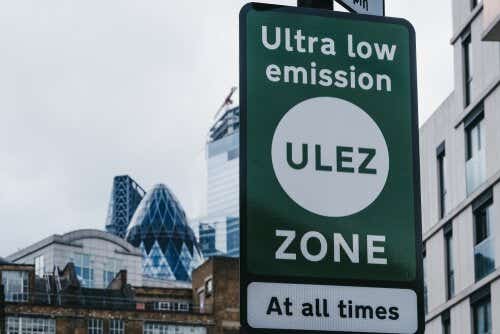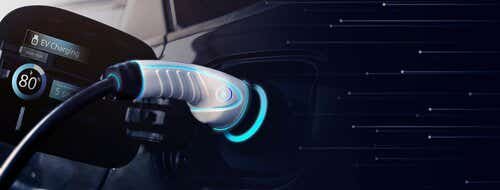What is an Ultra Low Emission Zone (ULEZ)?
An Ultra Low Emission Zone isn’t an electric car congestion charge - rather, it’s a daily charge for the worst-offending vehicles in terms of pollution travelling into London.
Why are Ultra Low Emission Zones established?
Petrol and diesel vehicle emissions have long been known to have a detrimental effect on the environment. With the focus on climate change at unprecedented levels around the world, the plans for London’s Ultra Low Emission Zone were implemented by Sadiq Khan in April 2019.
The aim is to reduce the amount of nitrogen dioxide in London’s air by 30% in order to improve the health of those living in London, but also to help the environment. Every vehicle that enters the ULEZ without meeting the emissions requirements will be charged £12.50 per day.
How are Ultra Low Emission Zones enforced?
The ULEZ operates from midnight to midnight every day of the year. It is monitored by numberplate recognition cameras that detect vehicles as they enter and exit the zone. Every vehicle that does so is put through a database to check its emissions status and whether or not a fee has to be paid.
Drivers who do have to pay will then receive notification requesting payment within three days. Those who fail to pay on time will face a penalty charge of £160 (£80 if paid within 14 days).
Which vehicles does the Ultra Low Emission Zone affect?
Cars
For cars, the minimum emission standards are:
Petrol: Euro 4
Diesel: Euro 6
You can check your vehicle’s standard here.
It’s worth noting that petrol cars that meet the ULEZ standards are generally those first registered with the DVLA after 2005, although cars that meet the standards have been available since 2001. Similarly, diesel cars that meet the standards are generally those first registered with the DVLA after September 2015.
Vans and minibuses
This category includes:
Small vans weighing a maximum of 1.205 tonnes empty
4X4 light utility vehicles, pickups weighing more than 1.205 tonnes empty up to and including 3.5 tonnes gross vehicle weight, motorised horseboxes and larger vans
Ambulances and motorcaravans (2.5-3.5 tonnes)
Minibuses which have over eight passenger seats and which don’t weigh more than five tonnes
The minimum emissions standards are:
Petrol: Euro 4
Diesel: Euro 6
New diesel vans sold from September 2016 should meet the Euro 6 standard and all petrol vans registered with the DVLA from January 2006 meet the Euro 4 standard.
Motorbikes and mopeds
This category includes:
Motorcycles
Mopeds
Motorised tricycles
Quadricycles (L category)
All vehicles need to meet Euro 3 emissions standards for NOx, but usually Euro 3 engines are featured in vehicles registered with the DVLA after July 2007.
Lorries and coaches
This category includes:
HGVs
Lorries
Vans
Motor caravans
Motorised horseboxes
Breakdown and recovery vehicles
Snow ploughs
Gritters
Refuse collection vehicles
Road sweepers
Concrete mixers
Fire engines
Tippers
Removal lorries
Other specialist vehicles
Buses, coaches and minibuses which have a gross weight of over 5 tonnes don’t need to pay the ULEZ charge. Other vehicles over 3.5 tonnes also do not need to pay the ULEZ charge, but would need to pay the London-wide LEZ charge if they don’t meet the LEZ emissions standard.
It should be noted that the ULEZ scheme allows for certain vehicles to retrofit emissions reduction technology in order to meet ULEZ standards.
Any retrofitting must be certified by the Clean Vehicle Retrofit Accreditation Scheme, which currently has emissions reduction technologies certified for vans, minibuses, motorhomes, buses, coaches and refuse vehicles. Once certified, the vehicle owner must notify TfL.
Where is the London Ultra Low Emission Zone (ULEZ)?
London’s Ultra Low Emission Zone covers the areas shown here.

The ULEZ perimeter formerly consisted of the North and South Circular roads, but the zone was extended to cover London's outer boroughs from 29 August 2023. The boroughs affected were:
Enfield (some of the borough is already part of the zone)
Waltham Forest (some of the borough is already part of the zone)
Redbridge (some of the borough is already part of the zone)
Havering
Barking and Dagenham
Newham (some of the borough is already part of the zone)
Bexley
Greenwich (some of the borough is already part of the zone)
Lewisham (some of the borough is already part of the zone)
Bromley
Southwark (some of the borough is already part of the zone)
Lambeth (some of the borough is already part of the zone)
Wandsworth (some of the borough is already part of the zone)
Croydon
Merton
Sutton
Kingston upon Thames
Richmond upon Thames (some of the borough is already part of the zone)
Hounslow (some of the borough is already part of the zone)
Ealing (some of the borough is already part of the zone)
Hillingdon
Harrow
Brent (some of the borough is already part of the zone)
Barnet (some of the borough is already part of the zone).
There are a number of exemptions and discounts, particularly vehicles for disabled vehicles (registered in the 'disabled' or 'disabled passenger vehicles' tax class benefit), which do not have to pay the ULEZ charge until 26 October 2025. London-licensed taxis are also exempt. For a full list of exemptions, click here.
What are congestion charge zones?
Congestion charge zones differ slightly from Ultra Low Emission Zones. They’re usually implemented by authorities in cities that suffer particularly from emissions caused by high levels of traffic. Cities that have implemented a congestion charge include Singapore, Stockholm, Milan and London.
Where is the London congestion charge zone?
In London, the congestion charge zone covers Central London (a smaller area than the ULEZ) but is separate from the ULEZ charge. This means that drivers with vehicles that don’t meet the ULEZ emissions standards will be charged both the £12.50 ULEZ fee and the £15 congestion charge fee for each day they use their vehicles within the congestion charge zone shown below.

FAQs
Can I drive in the Ultra Low Emission Zone?
Yes - the Ultra Low Emission Zone isn’t designed to keep drivers out. Anyone can drive in it as long as they have a valid license for the vehicle they’re operating; the issue is whether the vehicle is one you can be charged for using in the ULEZ.
How do I know if I need to pay ULEZ?
There are plenty of ULEZ road signs visible as you drive towards the border of the zone, so you should know in advance if you’ll have to pay the charge. You’ll also be notified via letter afterwards.
What happens if you live in the ULEZ zone?
Residents of the ULEZ zone were formerly granted a 100% discount, but this ended on 24 October 2021. If you live in the ULEZ zone and have a vehicle that doesn’t meet emissions standards, you’ll now have to pay £12.50 per day to use it.
Which areas does the ULEZ cover?
The ULEZ originally covered Central London (the same area as the congestion charge), which comprised: the City, Westminster and the inner parts of the boroughs of Hackney, Tower Hamlets, Camden, Islington, Lambeth, Southwark, Wandsworth and Kensington & Chelsea.
However, the ULEZ now covers all London boroughs.
Unsure if you need an EV home charger? Find the advice you need for the stage you're at here.

I'm considering buying an EV
If you're thinking about getting an EV, what do you need to consider when it comes to charging?

My EV is on the way
If you've ordered an EV, what do you need to do to prepare for its arrival?

I already have an EV
If you have an EV and you're considering installing a home charger, we can help advise you.




